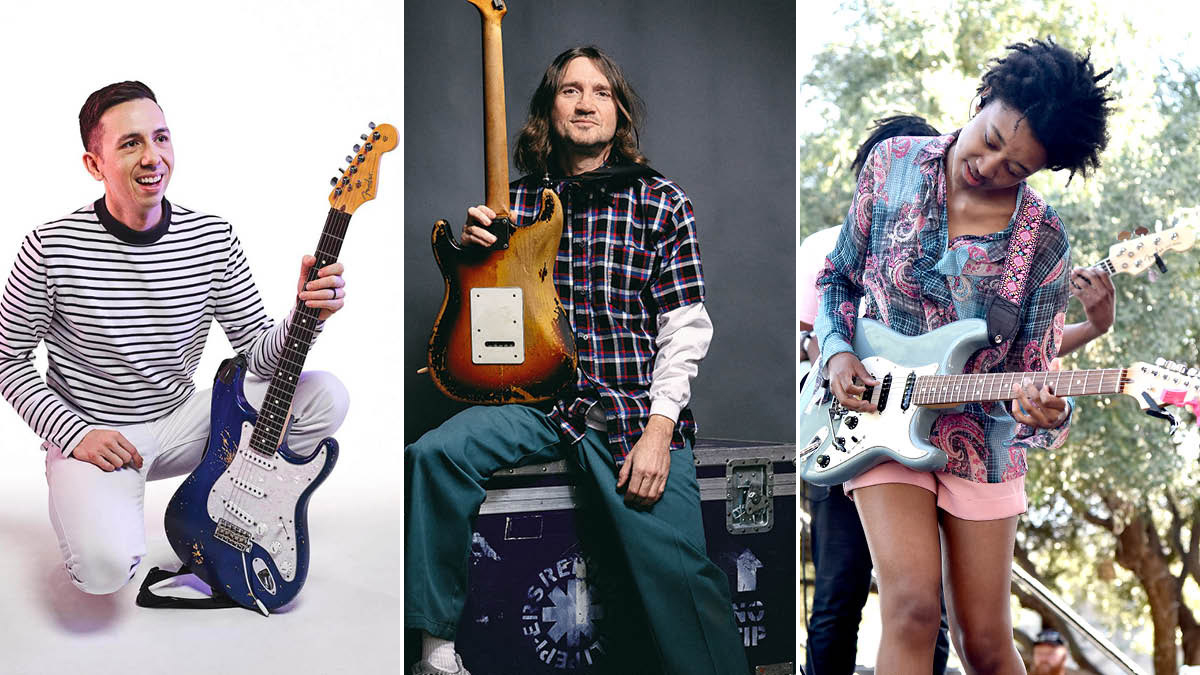How to play funk guitar in the style of John Frusciante, Cory Wong, Melanie Faye and more
Take your rhythmic chops to boot camp with this primer on the skills you need to make it funky

Although funk can be traced back to the early days of James Brown, like all styles, it has evolved a lot over the past 60 years. With an increasing body of great rhythm guitar players on the live circuit as well as well as online, there’s never been a greater abundance of talent and innovation, that’s constantly pushing stylistic boundaries.
Within this evolution, funk has crossed over into other styles such as RnB, neo-soul, fusion, gospel, and many more guitarists are becoming switched on to the beauty of using a clean sound and really working on rhythm and harmony.
At its heart, classic funk is all about syncopation, space and generally static/simple chords. The crossover into neo-soul and gospel largely retains this element of syncopation and rhythm but tends to use more extended and colourful harmony.
You’ll also find many of the guitarists featured here frequently use fingerstyle technique to bring in slaps/pops borrowed from classic funk bass technique, together with wider intervals and greater control over chord shapes.
Example 1. John Frusciante funk #1

When many people think of funk, they often turn to this ’90s-inspired Frusciante style rhythm. This small partial chord is inherently funky because of the space, fret-hand mutes and swing feel.
It’s all about how it interacts with the bassline, so notice how we’re not filling the bar with endless fret-hand muting. In this case, less is more.
Example 2. John Frusciante funk #2

Just like the classic James Brown blueprint of having two interlocking guitar parts, this D minor pentatonic idea is designed to ‘fill in the cracks’ of our previous guitar part.
John is a master of string muting, especially when fretting single notes while strumming through all the strings. Once you’ve mastered this technique, you’ll have the freedom in the picking hand to improvise any rhythm you like.
Example 3. Eric Krasno funk

As part of jazz-funk outfit Lettuce, Krasno’s style often mirrors the sparse single-note lines of James Brown’s most famous guitarist Jimmy Nolen.
Try to view our example riff through the lens of the B7 chord shape at the 7th fret and you should be able to see the connection between classic blues lines that target pentatonic ideas within the shape.
Aim to keep your pick hand moving at all times, but try to avoid constant fret-hand mutes.
Example 4. Cory Wong funk

Cory’s signature sound is position 4 on a Strat together with a dash of compression to make those funky lines pop.
He has a particularly rubbery pick hand wrist, so the key to this riff is constant pick hand motion coming from the wrist rather than the arm.
This riff is also a great lesson in how to get the most from a humble E7 chord, with Cory’s trademark melodic variations up and down the neck.
Example 5. Snarky Puppy fingerstyle

Snarky Puppy’s Mark Lettieri is a great fingerstyle specialist. Here the thumb, index and middle fingers can be used for percussive effects as well as playing chords/notes.
Beat 2 is a great example of the ‘keeping time’ percussive technique. This offbeat ‘mini slap’ comes from pivoting the pick hand at the wrist, away from the strings and back to rest on the strings.
Example 6. Mark Lettieri neo-soul

Here, as we delve into gospel-tinged neo-soul, we start to hear complex chord extensions such as the 9th and #5th for added tension. Much of the gospel/neo-soul stylistic vibe of this riff comes from the quick hammer-ons on chords.
As with our previous Lettieri-inspired riff, fingers work best, as you can get some great separation between notes in the chords. You can also try raking through chords with the thumb (as with the C#m9 chord).
Example 7. Mateus Asato funk

This Mateus Asato-inspired riff is a natural development of Mark Lettieri’s fingerstyle approach, but here we’re also incorporating a similar funk chord shape to our Frusciante ideas.
Again, the pick hand ‘keeps time’ by slapping/coming to a rest on the strings on every backbeat (beats 2 and 4). The final bar is a great example of how Mateus uses slick hammer-ons/legato as a rhythmic/percussive device.
Example 8. Melanie Faye neo-soul

The use of the whammy bar is a great way to add a lyrical/vocal-like quality to your extended chords, and this is a feature heard a lot in contemporary neo-soul.
Try to be subtle however, so you only need to use the ring and pinky finger to apply a gentle vibrato to the bar. The quick slide/legato manoeuvre that many guitarists all the way from Chris Buck to Melanie Faye love to use is a key idea that can add interest to simple single-note melodies.
Example 9. Justus West neo-soul

Taking inspiration from Grammy-winning multi-intrumentalist and producer Justus West, here we have a beautiful Am6/E chord that provides harmonic movement from the E major base.
Notice how there’s an internal melodic idea throughout that almost feels like a crossover from classic jazz. The downward chord slides can be a little tricky to master at first. Here you need to concentrate on getting equal pressure on all your fingers as you slide, so watch out for any fret buzz or muted notes.
Example 10. Isaiah Sharkey soul/jazz

Isaiah tends to play lines on the jazzier side of the street, so alongside classic soul chord ideas and improvised pentatonic lines, you’ll also find ‘outside’ chords such as the G7#5#9. Here, the addition of #5 and #9 intervals provides tension before you move back to the home chord of Cmaj7.
Get The Pick Newsletter
All the latest guitar news, interviews, lessons, reviews, deals and more, direct to your inbox!
Total Guitar is one of Europe's biggest guitar magazines. With lessons to suit players of all levels, TG's world-class tuition is friendly, accessible and jargon-free, whether you want to brush up on your technique or improve your music theory knowledge. We also talk to the biggest names in the world of guitar – from interviews with all-time greats like Brian May and Eddie Van Halen to our behind the scenes Rig Tour features, we get you up close with the guitarists that matter to you.









![Joe Bonamassa [left] wears a deep blue suit and polka-dotted shirt and plays his green refin Strat; the late Irish blues legend Rory Gallagher [right] screams and inflicts some punishment on his heavily worn number one Stratocaster.](https://cdn.mos.cms.futurecdn.net/cw28h7UBcTVfTLs7p7eiLe.jpg)

